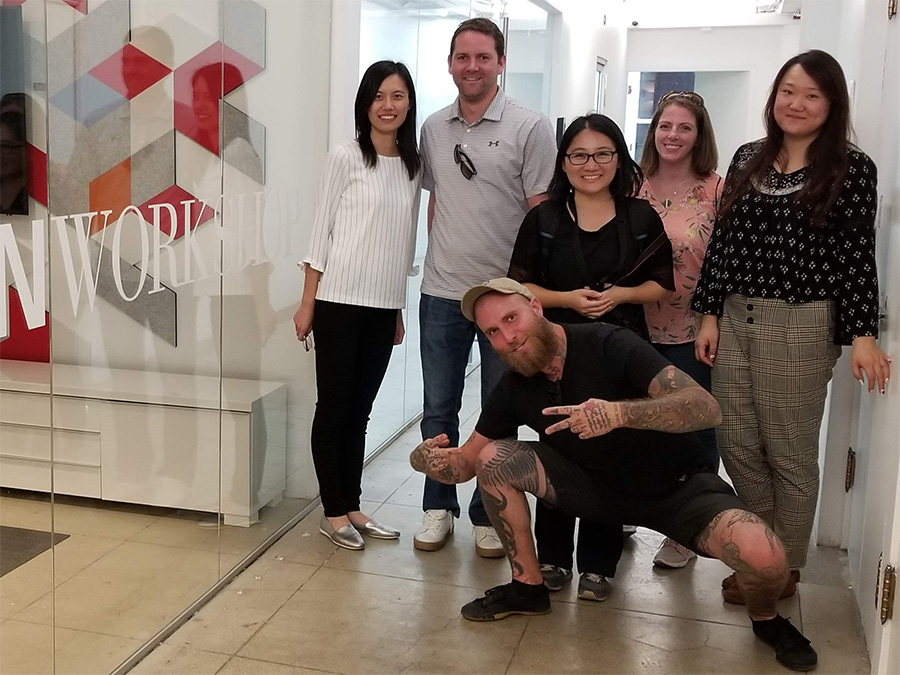News Release

Xiaojian (on far left) accompanied by visiting students and Senior Lecturer Carolina Segura Bell from University of Kentucky.
Interview with Xiaojian Fan
Posted 7/31/2020
We recently interviewed Xiaojian Fan, a landscape designer in our Los Angeles studio, who was promoted to Associate this year. She shares what drives her in this profession and the influence designers have toward improving public health.
What project are you currently working on?
I’ve been working on the Fontana Urban Greening Master Plan for our client, the Southern California Association of Governments and the City of Fontana. The City aimed to use this project as a way to create an urban greening vision while synthesizing previous planning efforts. We have given the City a green print on how to increase citywide urban greening and also strategies for implementation. The plan creates a multi-scalar, green infrastructure vision that influences development patterns, improves individual health, and creates a resilient future for Fontana.
What is the next trend on the horizon you are thinking about most?
The changing dynamic of streets is on my mind. Taking back the streets – that was trending before COVID – but now it is a focus. Municipalities are trying to improve our streets to accommodate multi-modal use. It is not only for cars, but also for pedestrians and bicyclists, especially with COVID-19 to meet social distancing requirements. City governments are also exploring strategies to add more trees and landscape along streets. We need figure out ways to balance the need for people to feel comfortable walking on the street while keeping the landscape healthy. We also need to amplify other trees and landscape benefits, such as improving air quality, storm water management and designing streets where businesses can thrive. We need to think of streets more as a green infrastructure, a community asset, instead of a corridor for cars to come through.
What led you into Landscape Architecture? How has it evolved?
In high school I had a classmate who was practicing landscape hand drawings. I saw the way she depicts the cityscape using a pen, I immediately became interested in this profession. I’ve always been passionate about art and I like how people perceive the landscape around them differently. Once I decided to study landscape architecture, I was hooked. I was fascinated by the complexity of this field – it’s not only about art, there are many factors that come into play from the water system and topography to the people who are using the space. All of these complex factors make it intriguing to study this profession. It’s like an onion – it’s not just what you see, there are many more layers underneath.